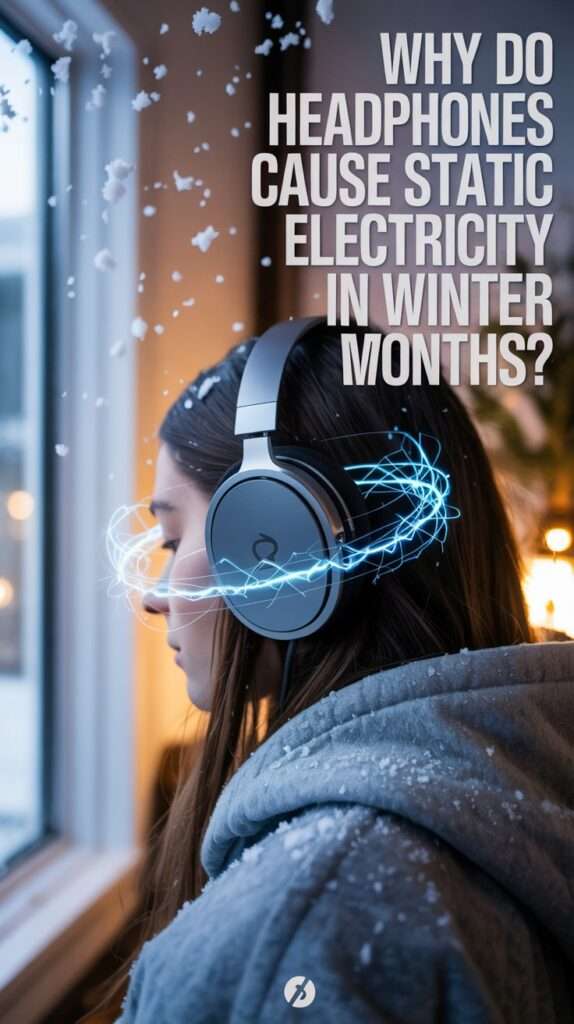Winter might be cozy with hot cocoa and fuzzy socks, but it also brings one annoying side effect for headphone lovers static electricity making your earphones crackle and pop like a campfire.
You plug in, expecting smooth tunes, and bam! That annoying static zap ruins your vibe. So, why do headphones cause static electricity in winter months? Grab your favorite playlist and let’s unpack this quirky winter mystery in a casual chat.
1. What’s Up with Winter and Static?
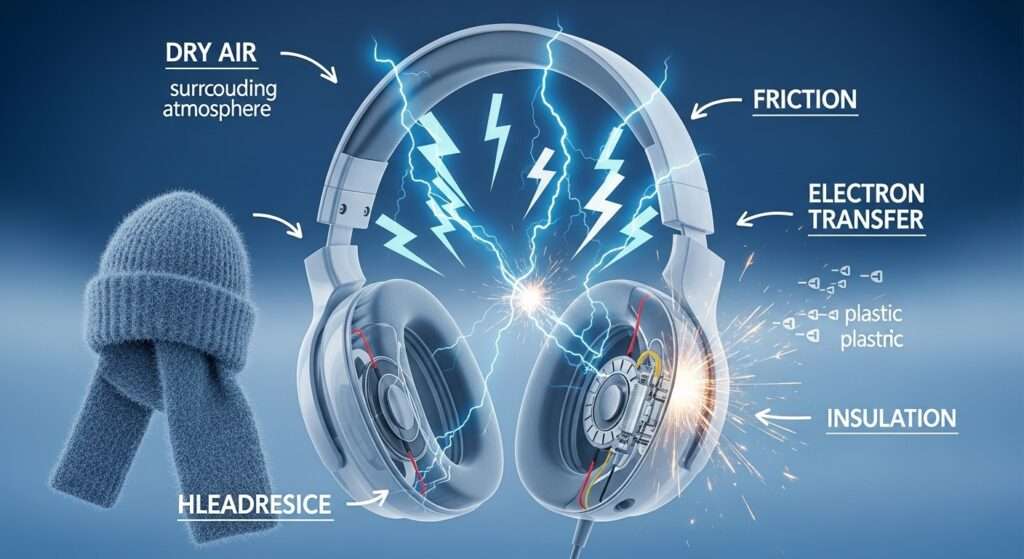
Ever wondered why your headphones go all “electro-rock concert” when the temperature drops? Well, the culprit is dry air, plain and simple. Winter air is notorious for lacking moisture, which means low humidity. This dry atmosphere is like the perfect party for static electricity to crash.
Dry Air: The Static Magnet
Here’s the deal: static electricity happens when there’s an imbalance of electric charges on a surface. Normally, moisture in the air helps electrical charges balance out by conducting them away. But in dry winter air, the absence of humidity means charges build up easily — on your clothes, your hair, and yes, your headphones.
What does this mean for your earphones?
- When you move or even just put on headphones, you create friction — rubbing your clothes, hair, or even the headphone cable.
- This friction generates static charges.
- Without enough moisture to disperse these charges, they hang around and eventually zap through your headphones as crackling noise.
So basically, your headphones are innocent; they’re just caught in the static storm.
2. Why Headphones, Specifically?
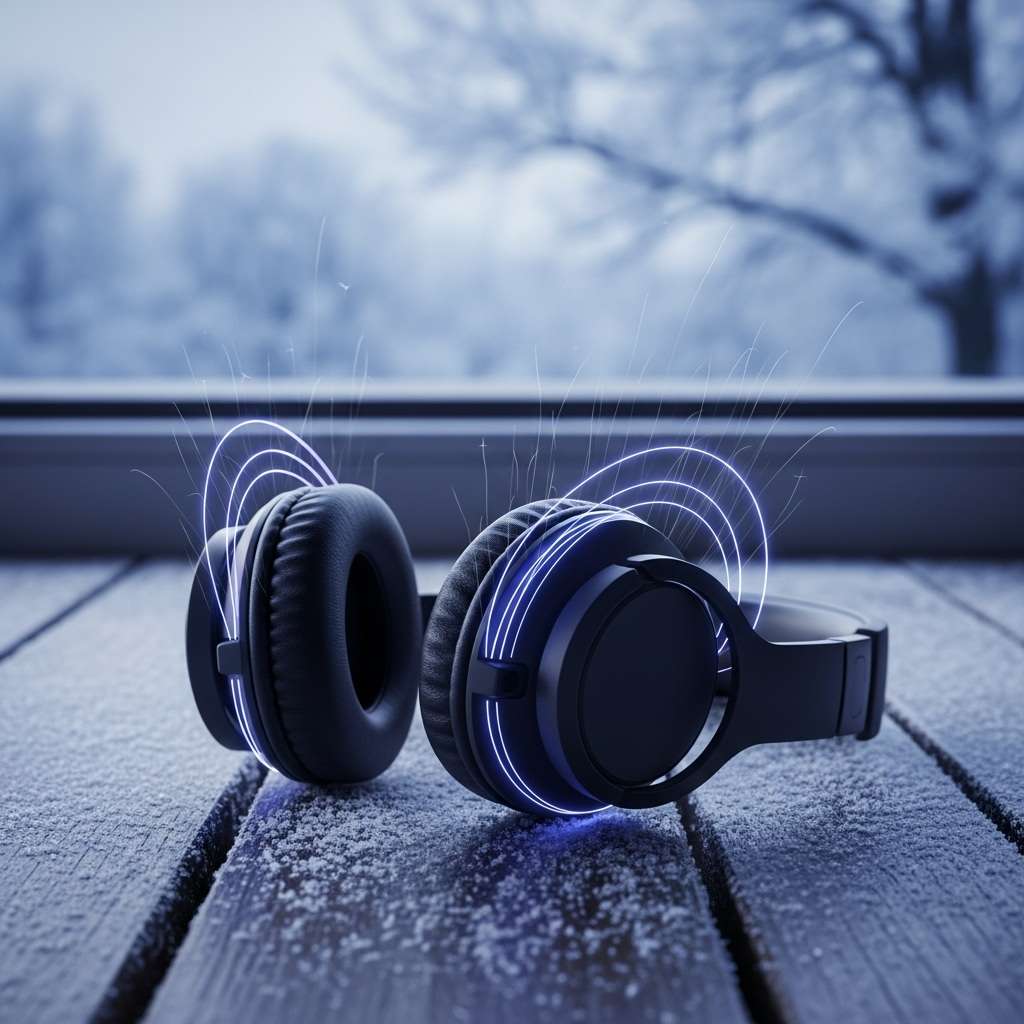
You might ask, “Okay, but why do headphones get that static noise more than other devices?” Great question! It’s a combo of materials and design.
Plastic Casing and Cords Love Static
Most headphones have plastic parts from the casing to the wires and plastic is a prime static electricity playground. These materials aren’t good at letting electrical charges flow away, so they hold onto the static longer. Also, headphone cords, especially the rubber-coated ones, generate more friction with your clothing as you move, boosting static buildup.
Small Electrical Circuits Are Sensitive
Inside your headphones, tiny speakers (drivers) and circuits transmit sound signals. These circuits are quite sensitive to stray static charges. When a zap hits, it disrupts the audio signal creating that annoying crackle or pop. It’s like a tiny electric hiccup right in your ear.
How Your Winter Wardrobe Makes It Worse
Believe it or not, your winter clothing is an accomplice in this static saga. Ever shuffled across a carpet in winter and got zapped? Same physics apply here. Synthetic fabrics (think polyester, fleece, or nylon) rub against headphone cables and create static charges more easily than natural fibers like cotton or wool.
Fabric + Headphones = Static Overload
- Synthetic fabrics generate more friction, which means more static charges.
- Wool is better but still can cause some static.
- Cotton is the least likely to cause static, so if you want fewer headphone zaps, maybe wear more natural fibers indoors!
3. Can Your Headphones Also Be to Blame?
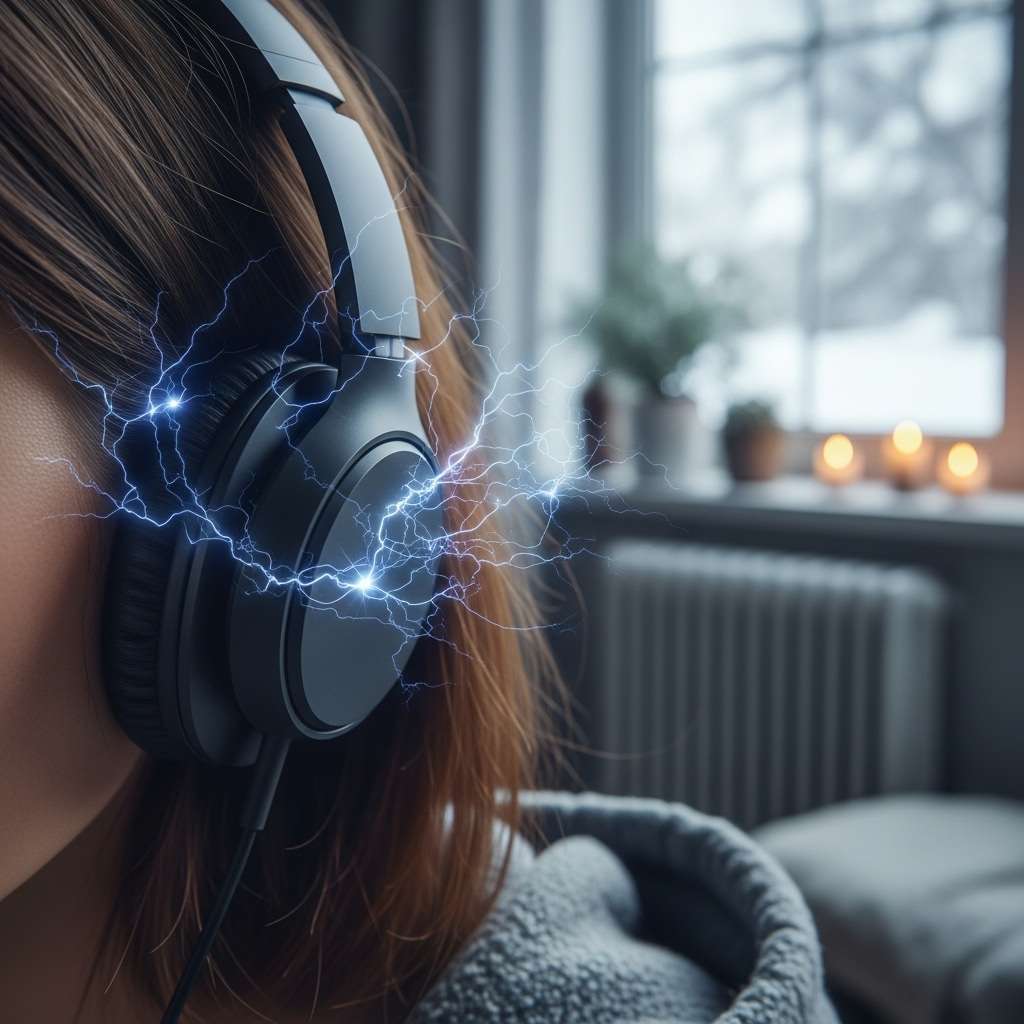
Yes, headphones aren’t just innocent bystanders. Some headphone designs and materials are more prone to static problems.
Cheap Plastic vs. High-Quality Materials
In my experience, budget headphones with cheap plastic and basic wiring tend to deliver more static noise. The insulation in the cable might not be great, and the material choice can promote static buildup. On the other hand, higher-quality headphones often use better materials and shielding to minimize static interference.
Wired vs. Wireless: Does It Matter?
I’ve noticed wired headphones get static more often, mostly due to the cable friction part. Wireless headphones? They still get static sometimes, but it’s often less noticeable because there’s no cable rubbing against your clothing.
4. How to Stop Static in Its Tracks
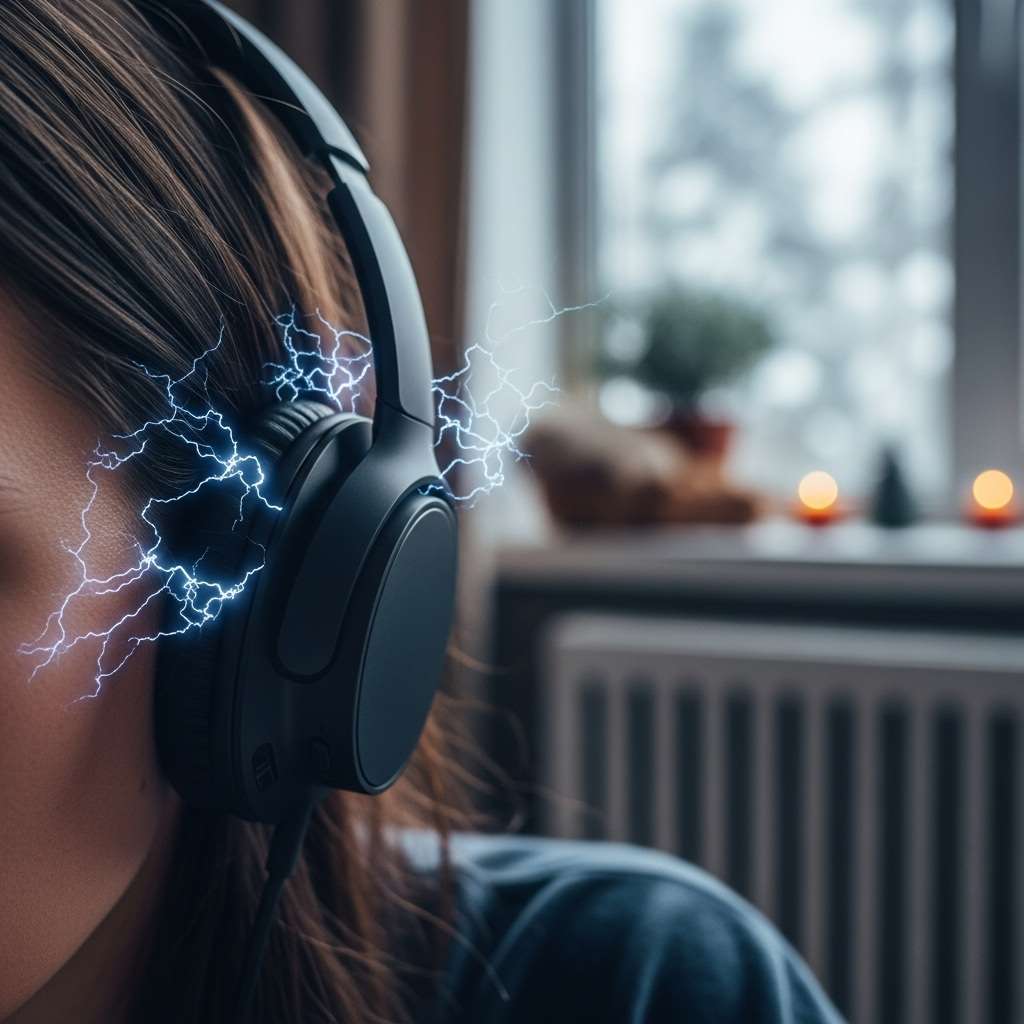
Enough with the complaint session; let’s talk solutions — because I’m pretty sure you don’t want to listen to your favorite song interrupted by crackles.
Boost Indoor Humidity
If dry air is the root cause, fix that first:
- Get a humidifier for your room.
- Dry winter heat dries air quickly indoors, so adding moisture helps reduce static by allowing charges to dissipate.
- Even simple tricks like leaving a bowl of water near heaters can help a bit.
Change Your Wardrobe
Swap synthetic fabrics for natural ones, at least when you’re using your headphones. Cotton shirts and wool sweaters reduce friction and static buildup.
Use Anti-Static Sprays or Wipes
FYI, there are anti-static sprays designed for electronics and fabrics. Spritzing these on your headphones or clothes can reduce static buildup instantly. Just don’t spray too close to electronic parts, okay? 🙂
Check Your Headphones
If your current headphones crackle too much in winter, consider upgrading to a better quality brand with:
- Shielded cables or braided wires.
- Anti-static material coatings.
- Wireless designs if cables are a static hotspot for you.
5. Why Does This Matter…

Besides ruining your jam session, static can damage your headphones over time. Tiny electrical zaps can degrade circuits, so it pays to keep static under control. Also, in extreme cases, static shocks can be uncomfortable, especially around your ears.
Personally, last winter I swapped synthetic hoodies for a comfy cotton one and noticed a huge drop in headphone static. Like night and day!
Final Thoughts
Static electricity on headphones in winter is kind of like that annoying friend who crashes every party uninvited. It’s mainly caused by dry air, friction from synthetic clothes rubbing against plastic headphone parts, and your headphones’ material sensitivity to static charges.
Want to avoid the crackling torment? Keep the air moist, choose your clothes wisely, and invest in good headphones (or wireless ones). And next time you hear that static zap, just remember your headphones are just trying to deal with winter the best way they can.
Got any crunchy headphone stories yourself? Or cool hacks to beat static? Feel free to share this static drama deserves more witty commentary!
